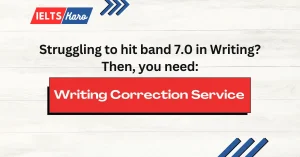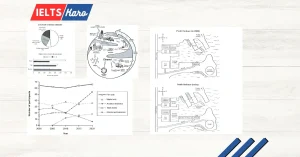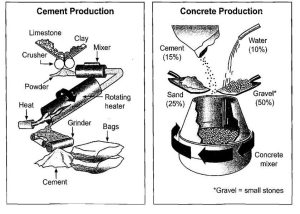IELTS Writing Task 1: What You Need to Know
The IELTS Writing Task 1 is the shortest, and perhaps the easiest of the two question types that you need to complete.
You are to write a summary of a bar chart, pie chart, graph, a process or a map (For IELTS Academic Task 1)
If you are opting for General, then in Task 1, you need to write a letter, which could be formal or informal.
PS: I appeared for my IELTS GT, and got an 8.5 overall, with an 8.5 in the Writing module. Hence, that makes me an experienced person to share my thoughts and views on this module 😉
In IELTS Writing Task 1, you need to write a letter (For General) of no less than 150 words, within 20 minutes. For IELTS Academic, you will need to summarize a visual such as a bar chart, a pie chart, a line graph, a map or a process diagram.
The letter for General, could be addressed to a friend, family member, a company, or an organization. The letter could also be formal or informal, depending upon the situation.
The prompt will provide all the necessary details, including who you’re writing to, the purpose of the letter, and any specific information you need to include. The total weightage of the Task 1 Letter is 33% of your Writing Exam.
The letter will put you into a situation, and provide three bullet points that you will have to explain in three different paragraphs. This means that the letter should have at least 5 paragraphs:
- Introductory paragraph
- Bullet point #1 paragraph
- Bullet point #2 paragraph
- Bullet point #3 paragraph
- Conclusion and Regards
Ideally, each paragraph should be around 3 to 5 lines, having similar length each. We do not recommend writing more than required to answer the question, because it will take you additional time to compensate for proofreading and editing.
Learn more about why proofreading and editing is important for getting a high band score in IELTS Writing.
Here are some key points that you need to remember:
What is the IELTS Writing Test Format?
Whether the test is formal or informal, you are expected to start off with a formal letter format. This includes a proper salutation (Dear Sir/Madam, Dear Abrar, Dear Hassan, Dear John, etc.), an introduction stating the purpose of your letter, body paragraphs addressing the key points, a concluding paragraph summarizing your request/message, and a closing (Yours faithfully/Sincerely/Best/Regards).
What is the Word Count?
Aim for 150-200 words for Part 1. While there is no maximum word count limit, staying within the range ensures you have enough time to address all the points and maintain a concise style.
Plus, you also need to proofread and edit the letter within the timeframe. While the instructions for the letter states that you are to spend around 20 minutes, it is up to you how much you actually spend to write. This varies from candidate to candidate.
My personal experience is that if you are well-versed in using computers and are appearing for the IELTS on Computer for the first time, then it should not take you more than 20 minutes to write, proofread, polish and edit the entire letter, ensuring it also fulfills the IELTS writing marking criteria.
You’ll have 20 minutes to complete Writing Task 1 General. This might seem tight, but with effective planning and practice, you can craft a well-structured response within the timeframe.
What is the IELTS Writing Marking Criteria?
The IELTS Writing Task 1 General is evaluated based on four main criteria. Each one of these weighs 25% each:
- Task Achievement: Did you address all the key points of the prompt accurately and completely?
- Coherence and Cohesion: Is your writing clear, well-organized, and easy to follow? Do you use transition words and phrases effectively to connect your ideas?
- Lexical Resource: Did you utilize a varied and appropriate vocabulary? Did you avoid overused words and simple sentence structures?
- Grammatical Range and Accuracy: Did you demonstrate a strong understanding of grammar rules? Are your sentences grammatically correct and error-free?
Types of Letters in IELTS Writing Task 1 General:
The prompts can cover a wide range of scenarios, but some commonly tested letter types include:
- Requesting Information: You might write to a company inquiring about a service or product, or to a local council seeking information about events or facilities.
- Making a Complaint: Express your dissatisfaction with a service or product and propose a solution.
- Ordering Something: Place an order for an item, specifying details like size, color, and quantity.
- Applying for Something: Write an application for a job, course, or membership.
- Inviting Someone: Invite a friend, family member, or colleague to an event or gathering.
Types of Questions for IELTS Writing Task 1 Academic
For the Writing Task 1 Academic, here are some of the question types that you need to answer:
- Bar chart – A Chart showing figures
- A pie chart – A pie chart that provides figures in the form of numbers or percentages
- A process – A 3 to 7 step process of usually a product being manufactured at an industrial scale that needs to be summed up.
- A map comparison – Two maps, either in past or present, or in present and future. Both maps will have differences that need to be highlighted and summed up clearly.





